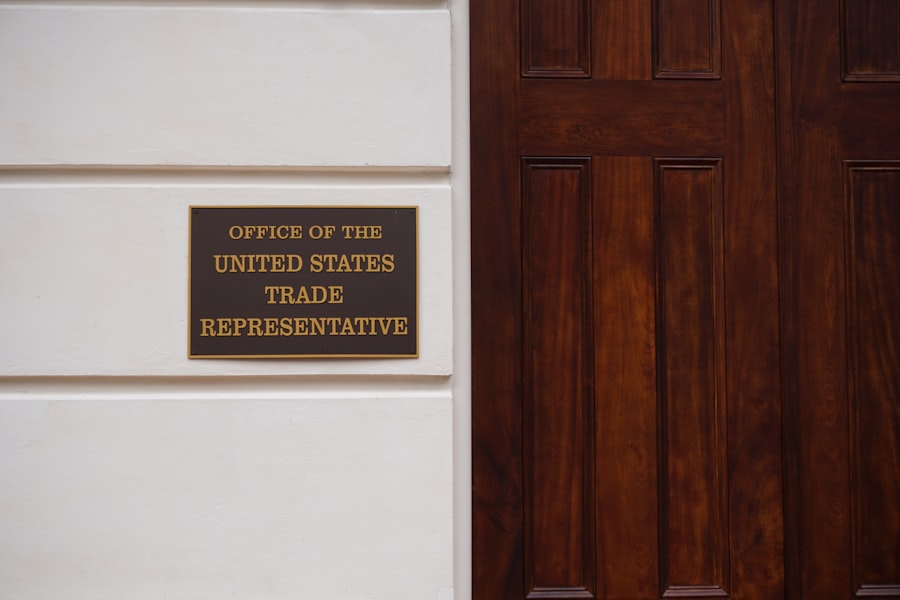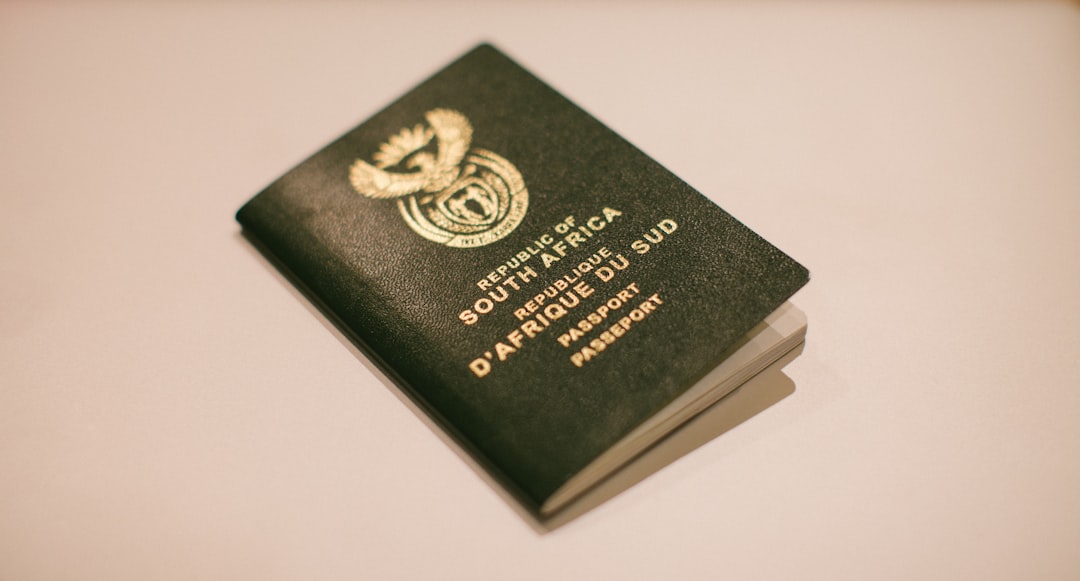Government asset confiscation is a complex and often contentious issue that has evolved over centuries. At its core, it involves the state taking possession of private property, whether for reasons of public interest, legal infractions, or political motives.
The motivations behind asset confiscation can vary widely, from the need to fund wars to the desire to redistribute wealth or suppress dissent. Understanding the historical context of these actions can provide valuable insights into contemporary debates surrounding property rights and government authority. As you delve into the history of asset confiscation, you will discover that it is not merely a modern phenomenon but rather a practice deeply rooted in human civilization.
From ancient empires to modern states, the act of seizing assets has been employed as a tool of power and control. This article will explore various historical periods and contexts in which governments have confiscated assets, examining the implications and consequences of these actions on individuals and societies alike.
Key Takeaways
- Government asset confiscation has been a recurring theme throughout history, from ancient civilizations to modern times.
- Ancient civilizations and feudal societies often saw the royal or state confiscation of assets as a means of consolidating power and wealth.
- The age of exploration and colonialism led to widespread asset seizures by European powers in the lands they conquered.
- The French Revolution saw the confiscation of aristocratic assets as a way to redistribute wealth and power.
- Totalitarian regimes and communist countries have used asset seizures as a tool for controlling and manipulating their populations.
Ancient Civilizations and Asset Seizures
In ancient civilizations, the concept of property was often intertwined with the authority of rulers and the state. You might be surprised to learn that asset confiscation can be traced back to ancient Mesopotamia, where kings would seize land and wealth from their subjects as a means of consolidating power. The Code of Hammurabi, one of the earliest written legal codes, included provisions for the confiscation of property in cases of debt or criminal activity.
This early form of asset seizure set a precedent for future governments to assert control over private property. Similarly, in ancient Rome, the state exercised significant power over property rights. You may find it fascinating that Roman law allowed for the confiscation of assets from individuals accused of treason or other serious crimes.
This practice not only served as a deterrent but also enabled the state to finance its military campaigns and public works. The Romans understood that controlling wealth was essential for maintaining their empire, and thus, asset confiscation became a tool for both punishment and economic stability.
Feudalism and Royal Confiscation of Assets

As you move into the feudal era, the dynamics of asset confiscation shifted significantly. During this time, land ownership was closely tied to social hierarchy, with kings granting land to nobles in exchange for loyalty and military service. However, you should note that this system also allowed for the royal confiscation of assets when vassals failed to meet their obligations.
The king’s ability to seize land from disloyal nobles was a crucial aspect of maintaining control over his realm. In this feudal system, you can see how asset confiscation was not only a means of punishment but also a way to redistribute wealth and reinforce loyalty among subjects. When a noble fell out of favor or failed to fulfill their duties, their lands could be taken and redistributed to loyal followers.
This practice ensured that power remained concentrated in the hands of those who were deemed trustworthy by the crown, while simultaneously serving as a warning to others about the consequences of disloyalty.
The Age of Exploration and Colonial Asset Seizures
| Exploration Period | Colonial Asset Seizures |
|---|---|
| 15th century | Spain seized gold and silver from the Americas |
| 16th century | Portugal seized valuable spices from Asia |
| 17th century | England seized land and resources in North America |
The Age of Exploration marked a significant turning point in the history of asset confiscation. As European powers expanded their empires across the globe, they often resorted to seizing assets from indigenous populations. You may find it shocking that entire civilizations were stripped of their wealth and resources in the name of colonization.
The Spanish conquest of the Aztec and Inca empires is a prime example; vast amounts of gold and silver were confiscated and shipped back to Europe, fundamentally altering global economies. During this period, asset confiscation was justified under the guise of civilizing missions and economic development. Colonizers often claimed that they were bringing progress to “backward” societies while simultaneously exploiting their resources.
This duality raises important questions about morality and ethics in government actions. As you reflect on this era, consider how these historical injustices continue to impact contemporary discussions about reparations and indigenous rights.
The French Revolution and Confiscation of Aristocratic Assets
The French Revolution serves as another pivotal moment in the history of asset confiscation. You might be intrigued by how revolutionary fervor led to the systematic seizure of aristocratic properties as part of a broader effort to dismantle the old regime. The revolutionaries viewed the wealth accumulated by the nobility as illegitimate, having been amassed through exploitation and privilege.
In this context, confiscating these assets was seen as a necessary step toward achieving equality and justice. The National Assembly’s decision to nationalize church properties further illustrates how asset confiscation was employed as a tool for social change during this tumultuous period. By redistributing wealth from the aristocracy and clergy to the common people, the revolutionaries aimed to create a more equitable society.
However, you should also consider the long-term consequences of such actions; while they may have been justified at the time, they also set a precedent for future governments to seize assets under various pretexts.
The Rise of Totalitarian Regimes and State Seizure of Assets

The 20th century witnessed the rise of totalitarian regimes that employed asset confiscation as a means of consolidating power and suppressing dissent. You may find it alarming how governments like those in Nazi Germany and Stalinist Russia systematically seized private property from individuals deemed enemies of the state. In these cases, asset confiscation was not only a tool for economic control but also a method for instilling fear among citizens.
In Nazi Germany, for instance, Jewish businesses were targeted for confiscation as part of a broader campaign of persecution. The state justified these actions by portraying Jews as threats to national security and economic stability. Similarly, in the Soviet Union, collectivization efforts led to the seizure of agricultural land from private farmers, resulting in widespread famine and suffering.
As you reflect on these historical examples, consider how asset confiscation can be weaponized by authoritarian regimes to eliminate opposition and maintain control over society.
World Wars and Government Confiscation of Private Property
The two World Wars brought about unprecedented levels of government intervention in economies worldwide, including widespread asset confiscation. During World War I and World War II, nations mobilized their resources for war efforts, often resorting to seizing private property for military purposes. You might be surprised to learn that governments implemented measures such as war bonds and rationing alongside outright confiscation to ensure that they had sufficient resources to sustain their military campaigns.
In many cases, individuals were left with little recourse as their properties were taken under emergency powers granted to governments during wartime. For example, in the United States during World War II, Japanese Americans faced mass internment and confiscation of their properties based solely on their ethnicity. This dark chapter in American history highlights how wartime hysteria can lead to gross violations of civil liberties and property rights.
Cold War Era and Asset Seizures in Communist Countries
The Cold War era further exemplifies how government asset confiscation became a hallmark of communist regimes. In countries like Cuba and China, revolutionary leaders sought to dismantle capitalist structures by seizing private property and redistributing wealth among the populace. You may find it interesting that these actions were often framed as necessary steps toward achieving social justice and equality.
In Cuba, Fidel Castro’s government nationalized industries and expropriated land from wealthy landowners in an effort to create a socialist state. While these actions were celebrated by some as victories for the working class, they also led to significant economic challenges and discontent among those who lost their livelihoods. Similarly, in China, Mao Zedong’s policies resulted in widespread land seizures during collectivization efforts, leading to devastating consequences for millions of farmers.
As you consider these examples, think about how asset confiscation can have both intended and unintended effects on society.
Modern Examples of Government Asset Confiscation
In contemporary times, government asset confiscation continues to be a relevant issue across various nations. You may be surprised by how modern legal frameworks allow for asset forfeiture in cases involving drug trafficking or organized crime. Law enforcement agencies often seize properties believed to be connected to illegal activities, raising questions about due process and individual rights.
Additionally, you might find it noteworthy that some governments have resorted to asset confiscation as a means of addressing economic crises or funding public projects. For instance, during times of financial instability, states may impose taxes or levies on wealthy individuals or corporations that can resemble forms of asset seizure. These modern examples illustrate how governments navigate complex legal landscapes while attempting to balance public interests with individual rights.
Legal and Ethical Issues Surrounding Asset Seizures
The practice of government asset confiscation raises numerous legal and ethical questions that warrant careful consideration. You may find it compelling to explore how different legal systems approach asset seizures and what safeguards are in place to protect individual rights. In many democratic societies, laws exist to ensure that property cannot be taken without just compensation or due process; however, these protections can vary significantly from one jurisdiction to another.
Ethically speaking, you might ponder whether it is ever justifiable for governments to seize private property for public good or national interest. While some argue that such actions are necessary for societal progress or security, others contend that they infringe upon fundamental rights and freedoms. As you reflect on these issues, consider how historical precedents inform current debates about property rights and government authority.
The Future of Government Asset Confiscation
Looking ahead, the future of government asset confiscation remains uncertain as societies grapple with evolving economic landscapes and political ideologies. You may wonder how advancements in technology will impact this practice; for instance, cryptocurrencies present new challenges for governments seeking to regulate or seize assets associated with illegal activities. As digital currencies gain popularity, you might consider how traditional notions of property ownership will adapt in response.
Moreover, as global inequalities persist, discussions about wealth redistribution may reignite debates surrounding asset confiscation as a potential solution. You could envision scenarios where governments implement policies aimed at addressing systemic injustices through targeted asset seizures from wealthy individuals or corporations. As you contemplate these possibilities, think about how historical patterns may repeat themselves or evolve in response to contemporary challenges.
In conclusion, government asset confiscation is a multifaceted issue with deep historical roots that continue to shape our understanding of property rights today. By examining various historical contexts—from ancient civilizations through modern times—you can gain valuable insights into the complexities surrounding this practice and its implications for individuals and societies alike.
The history of government asset confiscation is a complex and often controversial topic, reflecting the balance between state power and individual rights. Throughout history, governments have seized assets for various reasons, including punishment for crimes, tax evasion, or during times of war. A related article that delves into the intricacies of this subject can be found on Real Lore and Order. This article provides a comprehensive overview of how asset confiscation has evolved over time and its implications on society. For more detailed insights, you can read the full article by visiting Real Lore and Order.
WATCH THIS! The 8 Assets You OWN But the Government CONTROLS (Dollar Collapse Survival)
FAQs
What is government asset confiscation?
Government asset confiscation refers to the legal process by which the government seizes assets, such as property, money, or other valuables, from individuals or organizations. This can be done for a variety of reasons, including as a form of punishment for criminal activity, to enforce tax laws, or as part of civil forfeiture proceedings.
What are the reasons for government asset confiscation?
Government asset confiscation can occur for a variety of reasons, including as a result of criminal activity, such as drug trafficking or money laundering, to enforce tax laws, or as part of civil forfeiture proceedings where the government believes the assets are connected to illegal activity.
What is civil forfeiture?
Civil forfeiture is a legal process in which the government seizes assets that it believes are connected to illegal activity, even if the owner of the assets has not been convicted of a crime. This process is often controversial, as it can lead to the seizure of assets from innocent individuals.
How has government asset confiscation evolved throughout history?
Government asset confiscation has a long history, dating back to ancient times when rulers would seize the property of their enemies or those who were deemed to be in violation of the law. In modern times, asset confiscation has become more formalized through legal processes, but it remains a contentious issue due to concerns about due process and property rights.
What are the criticisms of government asset confiscation?
Critics of government asset confiscation argue that it can lead to abuses of power, particularly in cases of civil forfeiture where individuals may have their assets seized without being convicted of a crime. There are also concerns about the lack of due process and the potential for government overreach in seizing assets.
